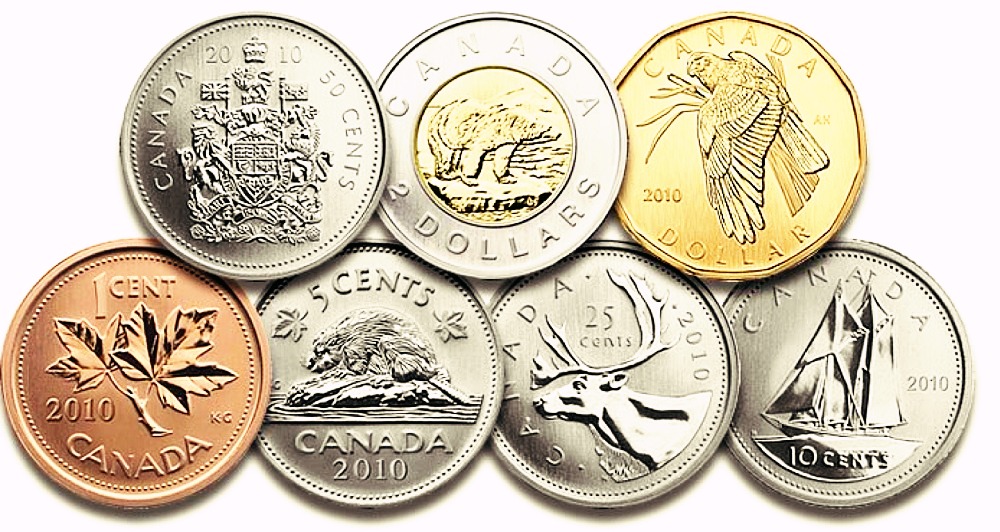Operation of the gold standard
From 1 August 1854 when the Currency
Act was proclaimed, until the outbreak of World
War I in 1914, the Province of Canada, and
subsequently the Dominion of Canada, was
continuously on a gold standard. Under this
standard, the value of the Canadian dollar was fixed
in terms of gold and was convertible upon demand.
It was also valued at par with the U.S. dollar, with
a British sovereign valued at Can$4.8666. As noted
earlier, both U.S. and British gold coins were legal
tender in Canada.
With the gold standard in place, monetary
policy was largely “on automatic pilot.” Paper
money was freely convertible into gold without
restriction, and there were no controls on the
export or import of gold. This implied that there
was virtually no scope for the authorities to manage
the exchange rate or to conduct an independent
monetary policy.52
Fluctuations in market exchange rates
between the Canadian dollar and the U.S. dollar and
the pound sterling, respectively, around their
official values were generally limited by the gold
“export” and “import” points. These points marked
the exchange rates at which it was profitable for
individuals to take advantage of price differences
between the market and official exchange rates
through the export and import of gold from
the United States or the United Kingdom.
The difference between the export and import
points and the official rates reflected the cost of
The Canadian Dollar
under the Gold Standard
(1854-1914) Canada, $10, 1912 Although Newfoundland issued gold coins as early as 1865, the Dominion of Canada did not do so until 1912–14, when
the recently established Royal Mint in Ottawa struck $5 and
$10 pieces. When the redemption of Dominion notes into
gold was suspended at the beginning of the First World War,
the production of Canadian gold coins ceased.
52. Note, however, that following Confederation, the amount of Dominion notes issued without 100 per cent gold backing was increased over time from
$8 million in 1868 to $30 million by 1913 (Beckhart 1929, 294). Rich (1988) argues that the marked expansion of the uncovered note issue through
the 1867–85 period suggests that the government relied extensively on discretionary monetary policy during this time. After 1885, however, although
the amount of Dominion notes in circulation continued to rise, there was a matching increase in gold reserves. Consequently, the percentage of gold
reserves to Dominion notes in circulation rose from only 21 per cent in 1890 to 81 per cent at the outbreak of World War I (Rich, 71–73 and
Beckhart, 296).
34 A History of the Canadian Dollar
insuring and shipping gold to and from New York
or London and Montréal, Canada’s financial centre
at that time. Given the proximity of New York,
the margins against the U.S. dollar were very
narrow around parity with a gold export point
of Can$1.0008 and a gold import point of
Can$0.9992.
The margins around the $4.8666 par
value of the pound sterling were somewhat wider,
±1 per cent, given the greater distance to be
travelled (Rich 1988). On rare occasions, the
Canadian dollar traded outside the gold points for
periods of several weeks, much longer than one
would have expected if arbitrageurs were efficient.
This suggests that obstacles, probably imposed by
governments in an effort to protect their gold
reserves, might have impeded their activities
(Turk 1962). While not a particularly significant
phenomenon prior to 1914, government-erected
impediments to the cross-border flow of gold
became common during World War I and even
more so through the late 1920s and early 1930s in
order to conserve the country’s gold reserves.
With monetary policy essentially on autopilot
and little in the way of active fiscal policy, there
was nothing to buffer economic swings and the
impact of large international capital movements. In
his 1867 pamphlet arguing in favour of government-issued fiat currency, Robert Davis contended,
Such a currency, moreover, freed from the constraint
of convertibility at the bank counter, would not be
subject to the fluctuations to which our present
circulation is constantly liable, and the injury to trade
from its contraction, at the time its extension was
most needed, would no longer exist . . . (Davis 1867, 32).
The price-specie flow
Classical economists explained international
economic adjustment under the gold standard
using a theory developed in part by David
Hume—the price-specie flow. Under this theory,
an economic shock that led to increased demand
in one country, and rising prices, would trigger
an increase in imports and a countervailing
outflow of specie to the rest of the world. The
drain in gold from the country experiencing the
shock would reduce the quantity of money in
that country, leading to higher domestic interest
rates (which, in turn, would slow demand), lower
prices (relative to those elsewhere),
and higher
exports. Increased net exports and capital
inflows attracted by relatively high domestic
interest rates would restore equilibrium to the
balance of payments. The opposite process
would happen simultaneously in the rest of the
world. The successful functioning of this
adjustment mechanism depends critically,
however, on the sensitivity of demand to price
changes in the countries affected. If the
“price-elasticity of demand” was low, it would
be possible under the fractional gold standard
that prevailed during this period for a country’s
reserves of specie to be exhausted before
adjustment was completed. See Yeager (1976).
A History of the Canadian Dollar 35
This opposition remained a minority
position, however, with the weight of orthodox
economic views and conventions in support of
the gold standard prevailing until the 1930s.
Accordingly, Canada experienced booms and busts
during the gold-standard years. For example,
between 1870 and 1900, Canada suffered several
economic contractions with falling prices.
In contrast, between 1900 and 1913, Canada
grew rapidly, and inflationary pressures
mounted as huge amounts of foreign capital
(as a percentage of Canadian GDP) entered the
country. (See also Appendix A.)5


